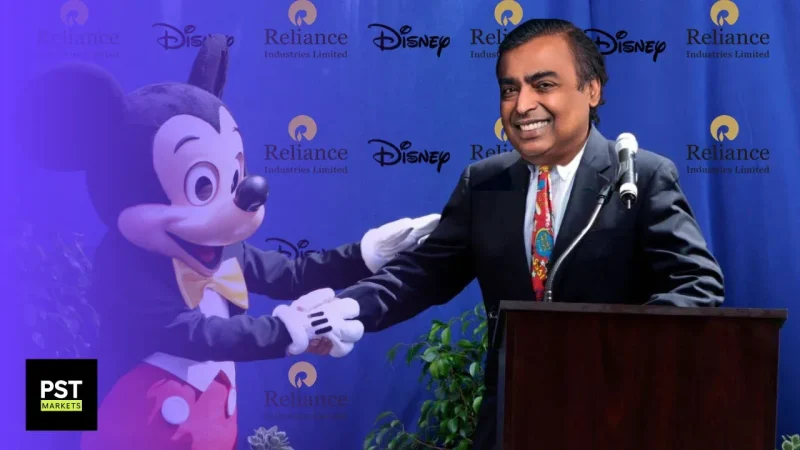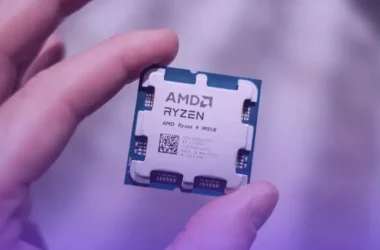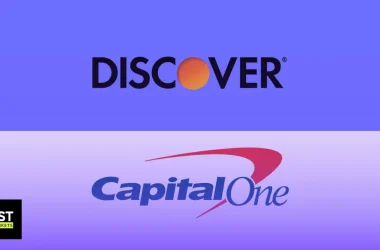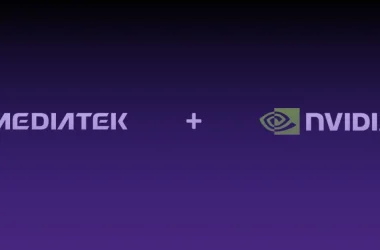Big news out of India: Walt Disney Co (NYSE: DIS) has decided to merge its media operations in India with the country’s most valuable company, Reliance Industries (NSE: RELIANCE). These are two of the biggest names in all of India’s media market.
The deal comes after the exodus of a large number of subscribers from Disney’s Indian streaming platform after it lost a battle against none other than Reliance over the rights to the Indian Premier League or IPL.
This merger is bound to have major repercussions that will shake the Indian media landscape. But by understanding the details of this deal and the future prospects for DIS stock, savy investors may find an opportunity to profit from this record breaking merger.
What is Reliance Industries?
Reliance Industries is the company that was able to muscle out the streaming giant Disney. The Indian conglomerate is the most valuable company in India, with a market cap of $221.21 billion, and operates in almost every sector you can think of, from telecommunications to petrochemicals and more. Most notably, however, it’s one of the biggest players in the Indian media market.
Reliance’s media subsidiary, Network18, specializes in almost all digital and non-digital media forms. It has a controlling stake in Viacom18, which is the company that will merge with Disney’s media operations in India.
Viacom18 owns 38 TV channels in India, including History18 and the Nickelodeon franchise. It also owns JioCinema, a streaming service offering video-on-demand and live-streaming content. This makes Viacom18 the 5th largest media platform in India, with a market share of 6%.
Disney Star
As for Disney, its market in India is even bigger. Its online streaming service, Disney+ Hotstar, alone has a market share of 25%. But this streaming service is only one part of Disney’s Indian media conglomerate, Disney Star. This conglomerate owns more than 70 television channels covering topics like news, entertainment, and sports. It attracts approximately 790 million viewers across India and more than 100 countries each month. This makes it the largest media conglomerate in India.
The Viacom-Disney merger could come as a surprise to some, given that Viacom is actually partly owned by Disney’s US rival, Paramount. This adds extra spice to the rivalry in India, especially since Paramount had been planning to introduce its own streaming service and bundle it with Viacom18s.
Disney & Viacom18 Merger
The merger will be done through an exchange of stock and cash, leaving Reliance Industries with 51% of the new company and Disney with 49%. Through this deal, Disney Star would be under the control of Viacom18, and a new company would be created.
While Reliance will have control, it was reported that the two companies agreed to an equal number of Reliance and Disney directors on the new board. The two companies also agreed to invest around $1 billion to $1.5 billion in the new company; the exact amount will be determined when the deal goes through, most likely in February 2024.
Why is this Merger Happening?
The reasons for this deal mostly comes down to the rights to the Indian Premier League or IPL. This competition is the most-watched cricket league in the world with 505 million people tuning in to watch in 2023 alone. Thanks to this huge viewership, its worth $6.2 billion.
Disney used to own the rights to stream this lucrative cricket league on Disney+ Hotstar. Unfortunately for Disney, the streaming rights were snatched away by Reliance last year for $2.9 billion in a bidding war.
Disney will still retain the TV rights until 2027 by paying more than $3 billion. It will also keep the rights to show the International Cricket Council’s tournaments until 2027 for another “staggering $3 billion” according to Disney’s CEO Robert Iger. However the streaming industry accounts for the second-largest share of India’s media industry and is expected to surpass the TV sector in the near future.
India’s Media Market
Naturally, this came as a blow for Disney, which might be worried about losing its crown as the king of Indian Media. This would be a big loss because India’s media market, considering its huge population and large number of English speakers, is a gold mine for any competitor in the media industry. The number of Indians who can speak English to a good extent is estimated to exceed 190 million.
This makes India’s media market ripe for the picking for any provider of English content worldwide. For example, Disney could make its global streaming content available in India; significantly increasing subscriptions to its global services. In turn, this would make Disney even more attractive to content providers across the world.
As is, the Indian market is projected to keep growing until it becomes the biggest in the world, which is not that far away since its currently the fifth-largest media market. To put into perspective how big of a deal this is, Hotstar subscriptions make up 36% of all Disney subscriptions, which means that the Indian market alone makes more than a third of Disney’s global streaming market.
The Indian Premier League
Disney’s Hotstar grew rapidly from 2021 – 2022 as the number of paid subscribers reached 61.3 million in Q2 2023. But after reaching this peak, Hotstar proceeded to lose 38% of its subscriber base in the following quarters, leaving it with just 37.6 million subscribers in Q4 2023.
This is largely because Reliance Industries won the rights to streaming the Indian Premier League in June 2023, causing subscribers to flee the platform. Especially because Viacom18’s rival platform – JioCinema – began streaming the IPL games for free in India.
| Quarter | Paid Subscribers (millions) | Average revenue per user ($) |
| Q4 23 | 37.6 | 0.70 |
| Q3 23 | 40.4 | 0.59 |
| Q2 23 | 52.5 | 0.59 |
| Q1 23 | 57.5 | 0.74 |
| Q4 22 | 61.3 | 0.58 |
| Q3 22 | 50.1 | 0.76 |
| Q2 22 | 58.4 | 1.20 |
| Q1 22 | 45.9 | 1.03 |
Clearly, streaming IPL was a major draw to Hotstar and without it the platform will struggle to regain its subscriber base. This is probably also why Hotstar didn’t care much about renewing its rights to stream HBO or Formula One, since most of its viewership has historically come from the IPL.
Given the decline in Hotstar subscribes it appears that this merger is a way for Disney to try and regain those IPL viewers it lost while also taking advantage of Reliance’s media market. But as for Reliance, its motivations for pursuing the merger are quite different since it wants to gain access to the channels owned by Disney in India. Disney’s content includes very popular franchises which Reliance could profit from in addition to benefiting from Disney+ Hotstar’s position as the largest streaming service in India.
Mega Media Complex
But both companies are likely motivated by a desire to create a huge media complex in India, since this merger would allow it to compete with streaming services like Netflix and Amazon Prime. But also with traditional TV services like Sony and Zee Entertainment which just scrapped their plans for a merger after two years. If the deal had gone through, the resulting company from the Viacom18 and Disney Star merger would have faced off against Sony and Zee in a dramatically consolidated media market.
With the deal between the two media giants – Sony and Zee Entertainment – out of the way, Disney and Reliance’s company could emerge as the strongest and largest player. In fact, the merger will create a company with 40% of the share of ads and 35% to 40% of the market share in Indian TV. It would also have the streaming service with the most viewers since Disney already has the largest streaming service in India, while Reliance has the most highly viewed IPL.
Will there be Regulatory Hiccups?
It might be surprising that a deal of this magnitude hasn’t attracted hostile regulatory attention. Especially since it is expected to go through smoothly in just a few weeks. But this isn’t so surprising once you understand who owns Reliance Industries.
The company is owned by Mukesh Ambani, India’s richest man. What’s more important than his wealth, is his ties to the government of India, specifically Prime Minister Narendra Modi.
Reliance Industries’ importance for the Indian economy cannot be overstated. It alone accounts for almost 10% of India’s exports. In US terms, it’s as though Dow Chemical, AT&T, Exxon Mobil, and Amazon were a single entity. Ambani and Modi have worked closely together over the years to keep expanding this gigantic conglomerate even further, with Ambani praising Modi on several occasions, stating, for example, that he’s “the best prime minister India has ever had”.
Still the merger is likely to face antitrust challenges and assets like some of their TV channels might need to be sold off to calm concerns regarding their combined market share. But given the unique relationship which exists between Mukesh Ambani and Prime Minister Modi, these challenges will likely not prevent the merger.
The Bottom Line
Overall, this merger is a massive deal for the Indian media and entertainment industry – particularly as Sony and Zee Entertainment’s merger fell apart. It will combine 2 of the most dominant players in the sector to create a true giant.
It can be argued that viewers themselves were the main driver for this merger. Viewers’ enthusiasm for IPL has no doubt shaped the trajectories of giant media conglomerates but this doesn’t mean that the consolidation of the media market to this degree will necessarily be a good thing for consumers.
Disclaimer
Please visit and read our disclaimer here.









